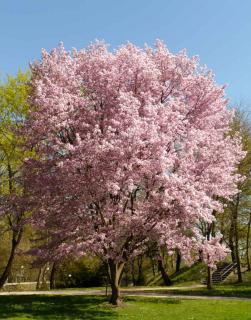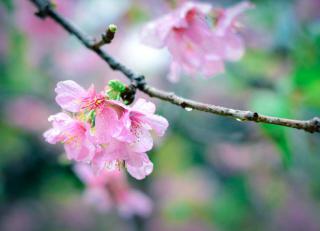

Ornamental cherry tree, also called Japanese cherry tree or Prunus, is a very beautiful ornamental tree.
Key Ornamental Cherry tree facts
Name – Prunus serrulata
Family – Rosaceae
Type – tree
Height – 16 to 40 feet (5 to 12 meters)
Exposure – full sun
Soil – ordinary, well drained
Foliage: deciduous – Flowering: March-April
Pruning and care will help it grow and bloom magnificently.

If you plant your Japanese cherry tree in winter, proceed only if it doesn’t freeze.
Just like most plants that have been purchased in pots or containers, it’s possible to wait for spring and summer to transplant it, if you avoid hot spells.
If this is the case, it will be necessary to water regularly over the first few months after planting.
The only pruning that is really important is the removing of dead wood.
Don’t prune before the blooming, but wait until it is over to reduce tree size or balance the branches, if needed.

Other varieties are the ‘Kiku Shidare Sakura’, ‘Hokusai’ and ‘Accolade’. These grow smaller than the ‘Kanzan’, and only reach about 20 to 26 feet (6 to 8 meters) tall. They also are entirely covered in beautiful spring flowers when they bloom.
Lastly, if a dwarf Prunus tree for a smaller garden is what you are looking for, check out the ‘Amanogawa’ variety.
A garden with an ornamental cherry tree is absolutely magnificent in spring. The tree brightens the first days of spring with abundant flowers in hues that range from white to pink.
The blooming only lasts about a week, but it will turn your garden in to a burst of color that signals that warmer weather is just about to come back.
Avoid places that are too exposed to wind so that the fragile blooms aren’t swept away too soon!